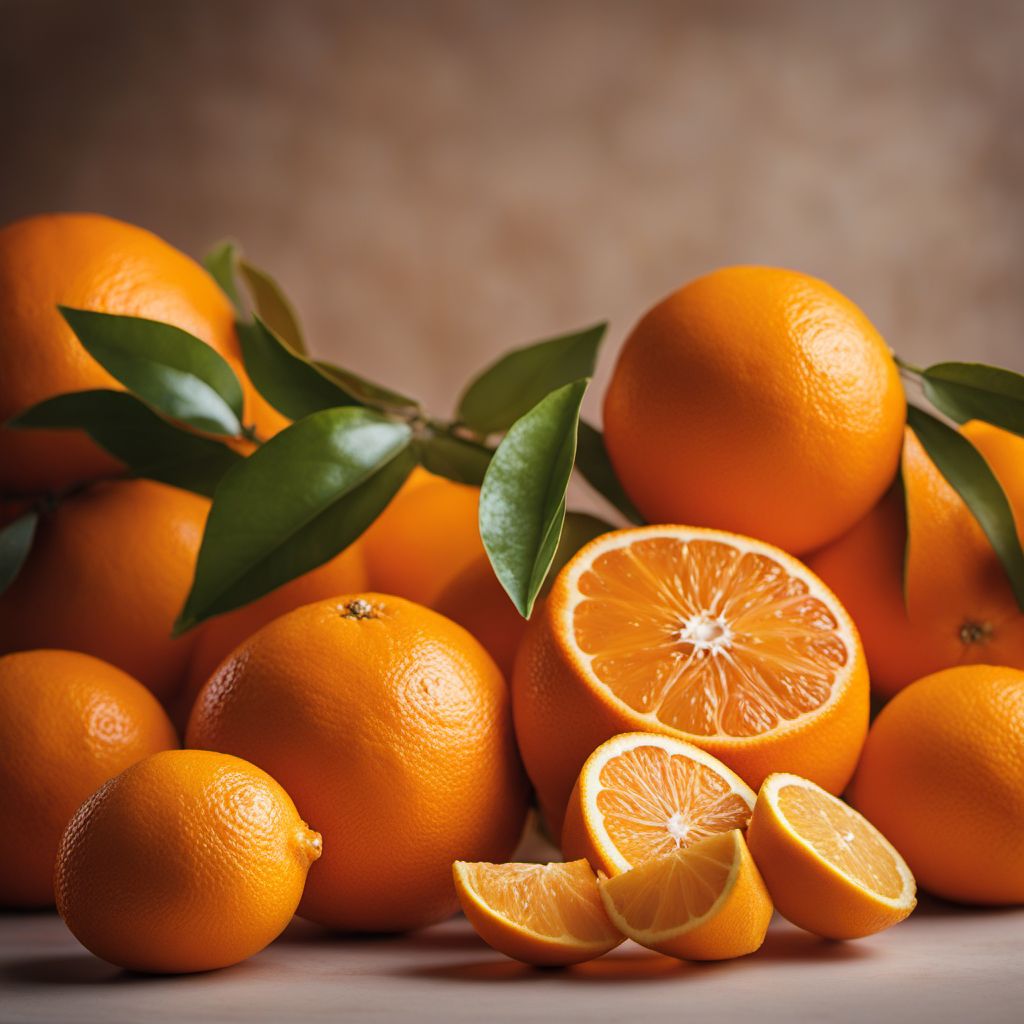
Ingredient
Oranges, sweet
The Citrus Delight: Exploring the Sweetness of Oranges
Oranges, sweet, are round citrus fruits with a bright orange peel that encases juicy, segmented flesh. They have a sweet and tangy flavor with a refreshing citrus aroma. The texture of the fruit is firm yet tender, and the flesh is succulent and bursting with juice. The peel is thick and can be easily removed to reveal the delicious fruit inside. Oranges, sweet, are known for their vibrant color, which ranges from deep orange to bright orange-yellow. They are available in various sizes, with some varieties being seedless for added convenience.
Origins and history
Oranges have a rich history that dates back thousands of years. They are believed to have originated in Southeast Asia, specifically in the region encompassing modern-day China and northeastern India. Oranges were introduced to the Mediterranean region by Arab traders in the 9th century and quickly spread throughout Europe. Spanish explorers brought oranges to the Americas during the 15th century, and they were later cultivated in Florida and California. Oranges have become an iconic fruit in many cultures and are associated with freshness, vitality, and abundance.
Nutritional information
Oranges, sweet, are a nutritional powerhouse, providing a rich source of vitamin C, fiber, and antioxidants. They are low in calories, with approximately 62 calories per medium-sized fruit, making them a healthy choice for those watching their calorie intake.
Allergens
Oranges, sweet, are not commonly associated with allergies, but individuals with citrus allergies should exercise caution when consuming them.
How to select
When selecting sweet oranges, look for fruits that are firm, heavy for their size, and have a smooth and brightly colored peel. Avoid oranges with soft spots, mold, or wrinkled skin, as these may indicate spoilage. The best-quality oranges will feel firm when gently squeezed and will have a fragrant citrus aroma.
Storage recommendations
To maintain the freshness and quality of sweet oranges, store them at room temperature if they will be consumed within a few days. For longer storage, place them in the refrigerator, preferably in a perforated plastic bag to retain moisture. Properly stored oranges can last for up to two weeks.
How to produce
Sweet oranges can be grown by amateur gardeners in regions with a suitable climate. They thrive in warm, subtropical climates and require well-drained soil and plenty of sunlight. Planting orange tree saplings and providing regular watering and fertilization can help produce homegrown sweet oranges.
Preparation tips
Sweet oranges can be enjoyed fresh by peeling off the skin and separating the segments. They can be juiced to make refreshing beverages or used as a flavoring agent in both sweet and savory dishes. The zest of oranges adds a burst of citrus flavor to baked goods, sauces, and marinades. To extract maximum juice from an orange, roll it firmly on a countertop before cutting and squeezing. Additionally, the juice can be frozen in ice cube trays for later use.
Culinary uses
Sweet oranges are widely used in both sweet and savory dishes. They are commonly juiced for fresh orange juice, used in fruit salads, added to smoothies, and incorporated into desserts like cakes, tarts, and sorbets. The zest and juice of oranges lend a bright and citrusy flavor to marinades, dressings, sauces, and glazes for poultry, seafood, and vegetables.
Availability
Sweet oranges are commonly available and cultivated in regions with a suitable climate, including Florida, California, Spain, Italy, and Brazil.

